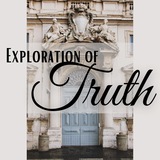In the 7th Century, one of the Church’s domes collapsed. No on in Constantinople at that time knew how to repair it. So the Emperor sent the word out to the Prophet Muhammed and he sent him back instructions on how to repair the damaged dome, along with camels loaded with a special mortar made of sand from Mecca and the saliva of the Prophet Muhammed. Muhammed also said he had seen a model of the Hagia Sophia in heaven when he was taken by the Angel Gabriel one night.
𝚂𝚘𝚞𝚛𝚌𝚎
𝚂𝚘𝚞𝚛𝚌𝚎
ASHMOLEAN STONES: 5 Platonic Solids from 3,500 Years Ago! well before Pythagoras' time.
These hand-sized spherical stones are on display at the Ashmolean Museum in Oxford, England, suggest a life of creative, intellectual synthesis for the Neolithic craftsmen of Britain who fashioned and “wrapped” them with leather thongs.
These specimens could be the oldest evidence of possible planetary grid research.
Scholars are amazed and startled at their precise geometric proportions.
Keith Critchlow, in his book, “Time Stands Still” estimates that their construction was at least 1,000 years before Plato described his 5 Platonic Solids in the Timaeus, (that is about 1,400BC).
Archeologists still believe that this time period was the time of a Primitive Cave Man! yet here we have clear evidence of a highly sophisticated and intelligent race of People.
𝚂𝚘𝚞𝚛𝚌𝚎 — Jain 108
These hand-sized spherical stones are on display at the Ashmolean Museum in Oxford, England, suggest a life of creative, intellectual synthesis for the Neolithic craftsmen of Britain who fashioned and “wrapped” them with leather thongs.
These specimens could be the oldest evidence of possible planetary grid research.
Scholars are amazed and startled at their precise geometric proportions.
Keith Critchlow, in his book, “Time Stands Still” estimates that their construction was at least 1,000 years before Plato described his 5 Platonic Solids in the Timaeus, (that is about 1,400BC).
Archeologists still believe that this time period was the time of a Primitive Cave Man! yet here we have clear evidence of a highly sophisticated and intelligent race of People.
𝚂𝚘𝚞𝚛𝚌𝚎 — Jain 108
Forwarded from De facto | Просвещение
Эпитафии в Древнем Риме
В те времена надгробия не были предназначены только для семьи или близких покойного, они создавались для всех.
Эпитафии говорили не о скорби близких, а скорее о социальной роли покойного. Обсуждение за ужином своего будущего надгробия не вызывало неловкости и не наводило на мрачные мысли; скорее это позволяло лишний раз обратить внимание на присущие человеку заслуги и добродетели. Каждый пирующий охотно, особенно после нескольких чаш вина, устраивал публичное чтение своей будущей эпитафии.
Эпитафия была возможностью передать некое послание: «Я жил бедно, так, как было мне предназначено жить, и теперь я советую вам брать от жизни больше удовольствий, чем это делал я. Жизнь такова: и все мы здесь будем. Любить, пить, ходить в бани — вот настоящая жизнь: после ничего уже не будет. Я же никогда не следовал советам философов. Не доверяйте врачам, это они меня убили».
Для современного человека подобные надписи на надгробиях означали бы неуважение к покойному. Но римляне, в отличие от нас, не боялись выносить сор из избы.
De facto | Просвещение
В те времена надгробия не были предназначены только для семьи или близких покойного, они создавались для всех.
Эпитафии говорили не о скорби близких, а скорее о социальной роли покойного. Обсуждение за ужином своего будущего надгробия не вызывало неловкости и не наводило на мрачные мысли; скорее это позволяло лишний раз обратить внимание на присущие человеку заслуги и добродетели. Каждый пирующий охотно, особенно после нескольких чаш вина, устраивал публичное чтение своей будущей эпитафии.
Эпитафия была возможностью передать некое послание: «Я жил бедно, так, как было мне предназначено жить, и теперь я советую вам брать от жизни больше удовольствий, чем это делал я. Жизнь такова: и все мы здесь будем. Любить, пить, ходить в бани — вот настоящая жизнь: после ничего уже не будет. Я же никогда не следовал советам философов. Не доверяйте врачам, это они меня убили».
Для современного человека подобные надписи на надгробиях означали бы неуважение к покойному. Но римляне, в отличие от нас, не боялись выносить сор из избы.
De facto | Просвещение
The Table of Observation
Apparently used in the USSR, this table, or perhaps a variation of it, was used to test a person’s observational skills.
However, I’m not sure how true that is as I can’t seem to find any information on it. What I did find seems to all originate from a Russian social media platform, vk.
➤ Does anyone have any information about this “table of observation”?
Ps - I did it in 9:13 🙂
••••••••••
Give it a try. Find the numbers sequentially from 1 to 90.
5-10 mins: you have exceptional powers of observation
10-15 mins: good
15-20 mins: medium
20-25 mins: you have satisfactory observation, but amazing patience
••••••••••
𝐄𝐱𝐩𝐥𝐨𝐫𝐚𝐭𝐢𝐨𝐧 𝐨𝐟 𝐓𝐫𝐮𝐭𝐡🕊️
Apparently used in the USSR, this table, or perhaps a variation of it, was used to test a person’s observational skills.
However, I’m not sure how true that is as I can’t seem to find any information on it. What I did find seems to all originate from a Russian social media platform, vk.
➤ Does anyone have any information about this “table of observation”?
Ps - I did it in 9:13 🙂
••••••••••
Give it a try. Find the numbers sequentially from 1 to 90.
5-10 mins: you have exceptional powers of observation
10-15 mins: good
15-20 mins: medium
20-25 mins: you have satisfactory observation, but amazing patience
••••••••••
𝐄𝐱𝐩𝐥𝐨𝐫𝐚𝐭𝐢𝐨𝐧 𝐨𝐟 𝐓𝐫𝐮𝐭𝐡🕊️
The Mermaid— The Times. London, England, Wednesday, October 08, 1823, p. 2.
••••••••••
𝐄𝐱𝐩𝐥𝐨𝐫𝐚𝐭𝐢𝐨𝐧 𝐨𝐟 𝐓𝐫𝐮𝐭𝐡🕊️
••••••••••
𝐄𝐱𝐩𝐥𝐨𝐫𝐚𝐭𝐢𝐨𝐧 𝐨𝐟 𝐓𝐫𝐮𝐭𝐡🕊️
Marvellous— man attacked by a man in a bear suit
The Philadelphia Inquirer. Philadelphia, Pennsylvania, Friday, October 17, 1794, p. 3.
••••••••••
𝐄𝐱𝐩𝐥𝐨𝐫𝐚𝐭𝐢𝐨𝐧 𝐨𝐟 𝐓𝐫𝐮𝐭𝐡🕊️
The Philadelphia Inquirer. Philadelphia, Pennsylvania, Friday, October 17, 1794, p. 3.
••••••••••
𝐄𝐱𝐩𝐥𝐨𝐫𝐚𝐭𝐢𝐨𝐧 𝐨𝐟 𝐓𝐫𝐮𝐭𝐡🕊️
